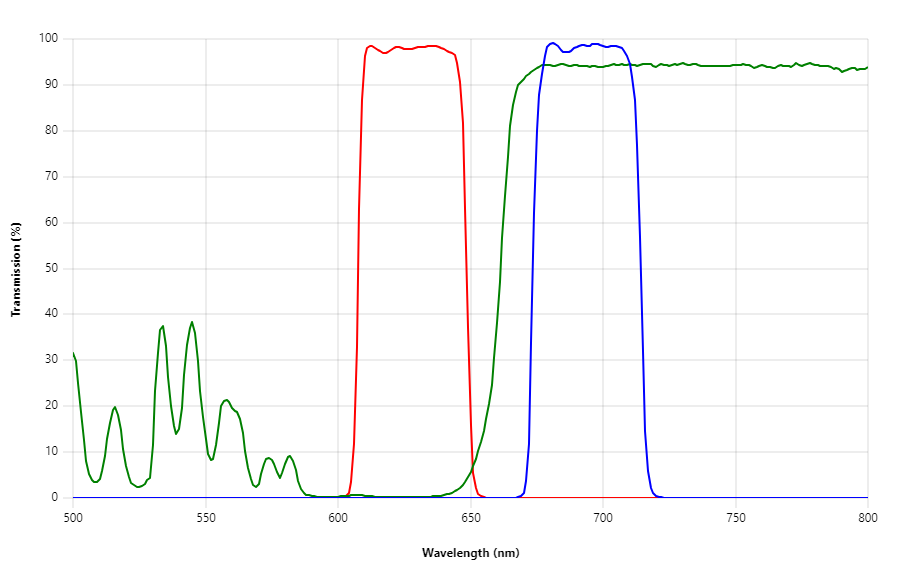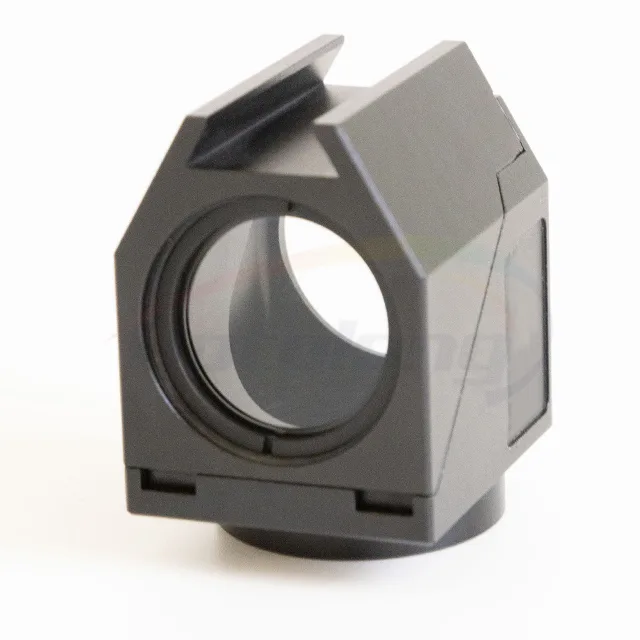Introduction
In the realm of fluorescence microscopy, researchers often encounter various fluorescent dyes and staining agents that enable visualization of specific cellular structures or processes. When choosing compatible components for fluorescence imaging experiments, it is crucial to ensure that the filter cube used matches the spectral characteristics of the fluorophore. In this article, we will explore the compatibility between the CY5 filter cube and the fluorophore Ethidium Homodimer-1.
Understanding CY5 Filter Cube
Definition and Function
In fluorescence microscopy, a CY5 filter cube is an optical part that transmits only the light emitted by the fluorophore CY5 while blocking out-of-band excitation and emission wavelengths. The filter cube’s many filters and mirrors accurately separate the excitation light from the fluorescence that is emitted, improving image clarity and lowering background noise.
Applications
For cellular imaging, immunofluorescence staining, and fluorescence in situ hybridization (FISH), CY5 filter cubes are frequently used in biological research. They allow for the observation of cellular architecture, protein localisation, and nucleic acid sequences by concentrating on the fluorescence released by CY5-labeled probes or antibodies.

Compatibility with Fluorophores
It is best to use CY5 filter cubes with fluorophores that emit light within a particular range of wavelengths. CY5 filter cubes can work with other fluorophores that have comparable spectrum characteristics, such as Alexa Fluor 647 or APC (allophycocyanin), even though they are designed primarily for CY5 fluorophores. To guarantee the best outcomes, compatibility should be experimentally confirmed.
Introduction to Ethidium Homodimer-1
Purpose and Uses
A typical nucleic acid stain for fluorescence microscopy and cell biology studies is ethidium homodimer-1 (EthD-1). Since it only stains damaged or dead cells with weakened plasma membranes, its main function is to evaluate cell viability. EthD-1 enters dead cells but is impermeable to living cells. There, it attaches to DNA and, when excited, displays red fluorescence.
Fluorescence Properties
The wavelength of EthD-1 fluorescence emission is typically 617 nanometers (nm) in the red spectrum. Because of its spectral properties, it can be used with filter cubes intended for red or far-red fluorophores. EthD-1 is stimulated by a suitable light source and emits
Compatibility of CY5 Filter Cube with Ethidium Homodimer-1
Similarities and Differences
Ethidium Homodimer-1 and CY5 both exhibit fluorescence in the red spectrum, which suggests that they may be compatible with the same filter cube. However, it is crucial to understand that A DNA intercalating dye specifically created for cell viability tests is Ethidium Homodimer-1, while the synthetic fluorophore CY5 is frequently employed in labeling techniques. Their different intended uses and unique staining processes may have an impact on which filter cube is best for imaging.
Considerations for Usage
A CY5 filter cube’s compatibility with Ethidium Homodimer-1 should be evaluated in light of a number of variables. These include the CY5 filter cube’s filter characteristics, the microscope equipment being utilized, and the excitation and emission spectra of ethidium homodimer-1. To ensure proper compatibility, it is advised to review the instructions provided by the manufacturers of the CY5 filter cube and Ethidium Homodimer-1.
Experimental Validation
Numerous investigations have been carried out to establish the compatibility of the CY5 filter cube with Ethidium Homodimer-1. These investigations assessed the fluorescence signals and image quality achieved while employing a CY5 filter cube with ethidium homodimer-1. Researchers have frequently reported using the CY5 filter cube to successfully image and see dead cells stained with Ethidium Homodimer-1.
But it is vital to keep in mind that every experiment is different, and depending on the particular microscope and imaging equipment, optimization may be necessary. Pilot tests and testing of the CY5 filter cube’s suitability for use with Ethidium Homodimer-1 in individual laboratories are welcomed.
Conclusion
For the purpose of fluorescence imaging of dead or damaged cells, the compatibility of the CY5 filter cube with Ethidium Homodimer-1 appears promising. Despite the fact that CY5 and Ethidium Homodimer-1 both emit fluorescence in the red spectrum, the precise staining processes and intended applications may have an impact on the filter cube selection for the best imaging outcomes. To ensure compatibility and successful imaging of ethidium homodimer-1 using a CY5 filter cube, researchers should consult the manufacturer’s instructions and perform validation experiments.

FAQs
FAQ 1: Can I use Ethidium Homodimer-1 without a filter cube?
No, doing so can result in a higher background signal and lower image quality when utilizing Ethidium Homodimer-1 without a filter cube. For the purpose of suppressing undesirable excitation and emission wavelengths and selectively catching the fluorescence that is released, a filter cube is necessary.
FAQ 2: Can I use a different filter cube with CY5 dye?
It is advised to use a filter cube made especially for CY5, however other filter cubes with suitable spectral properties might also be used. However, in order to guarantee the best outcomes, experimental validation is essential.
FAQ 3: Are there any alternatives to Ethidium Homodimer-1?
Yes, other nucleic acid stains, such as propidium iodide (PI) or SYTOX dyes, are available for determining the viability of cells. The needs of the experiment should be taken into account when selecting the suitable stain because each dye has unique properties and compatibility issues.
FAQ 4: How do I optimize fluorescence imaging with CY5?
It is crucial to take into account variables including excitation and emission wavelengths, filter specifications, microscope settings, and imaging conditions in order to maximize fluorescence imaging using CY5. The best outcomes can be attained by adjusting these values and running test experiments.
